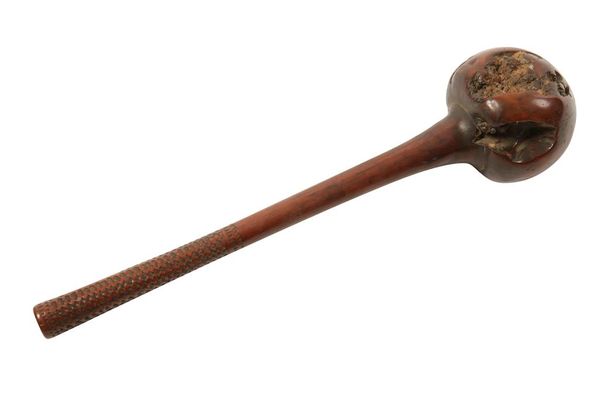Bidding ended. Lot has been sold.
A FINE 'ULA' THROWING CLUB carved of root wood, the head of onion shape form, the handle/grip carved with worn typical geometric design, 19th century or earlier, 42cm long. Provenance: By descent from the Family of John Williams (1796-1839). John Williams was an English missionary, active in the South Pacific. In 1817, John Williams and his wife, Mary Chawner, voyaged to the Society Islands, a group of islands that included Tahiti. John and Mary established their first missionary post on the island of Raiatea. From there, they visited a number of the Polynesian island chains. Landing on Aitutaki in 1821, they used Tahitian converts to carry their message to the Cook islanders. One island in this group, Rarotonga was discovered by Captain John Dabs of the colonial schooner Endeavour in August 1823, with Rev. Williams on board. The Williamses returned in 1834 to Britain, where John supervised the printing of his translation of the New Testament into the Rarotongan language. Most of the Williamses' missionary work, and their delivery of a cultural message, was very successful and they became famed in Congregational circles. However, in November 1839, while visiting a part of the New Hebrides where John Williams was unknown, he and fellow missionary James Harris were killed and eaten by cannibals on the island of Erromango, Vanuatu, during an attempt to bring them the Gospel. A memorial stone was erected on the island of Rarotonga in 1839 and is still there.
The LMS successively operated seven missionary ships in the Pacific which were named after John Williams. In December 2009 descendants of John and Mary Williams travelled to Erromango to accept the apologies of descendants of the cannibals in a ceremony of reconciliation. To mark the occasion, Dillons Bay was renamed Williams Bay.
Read more

